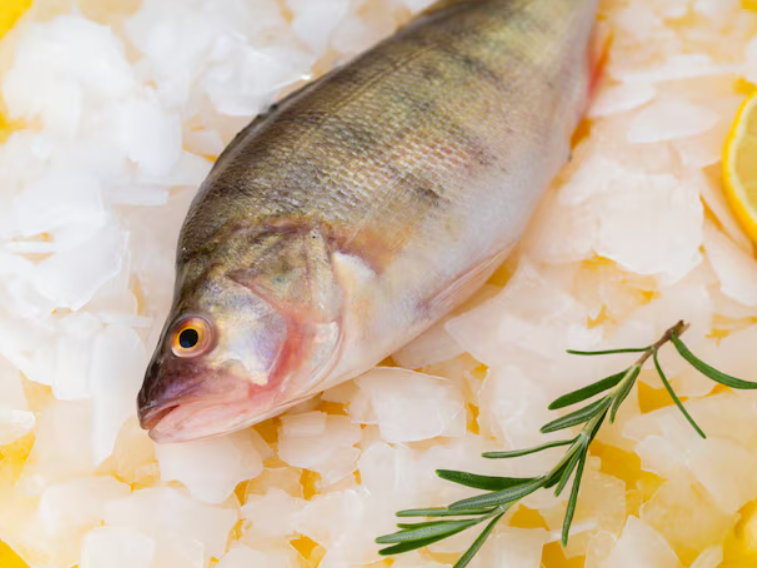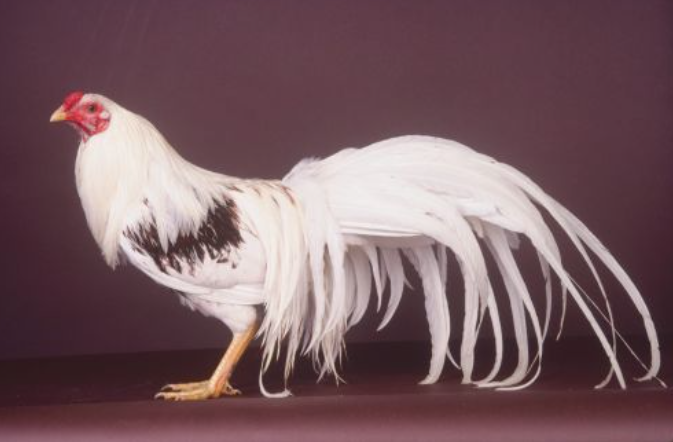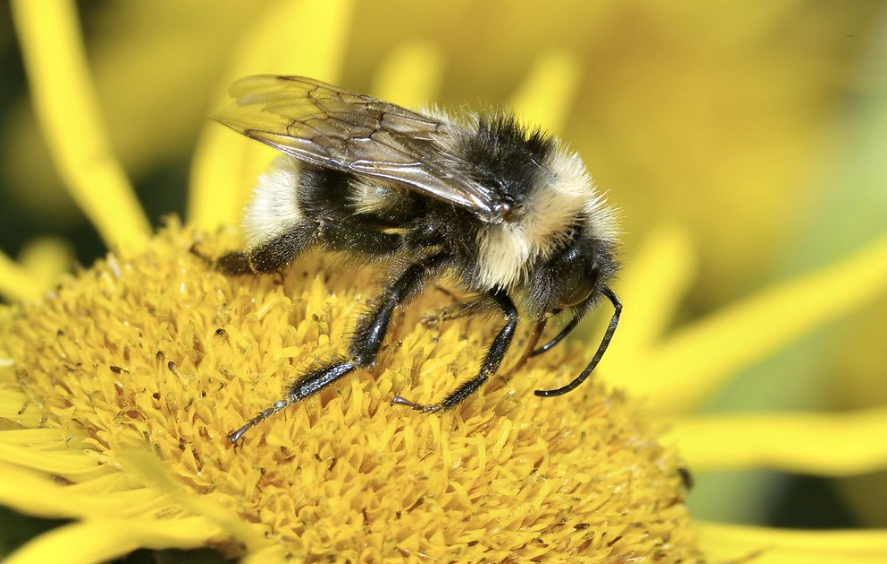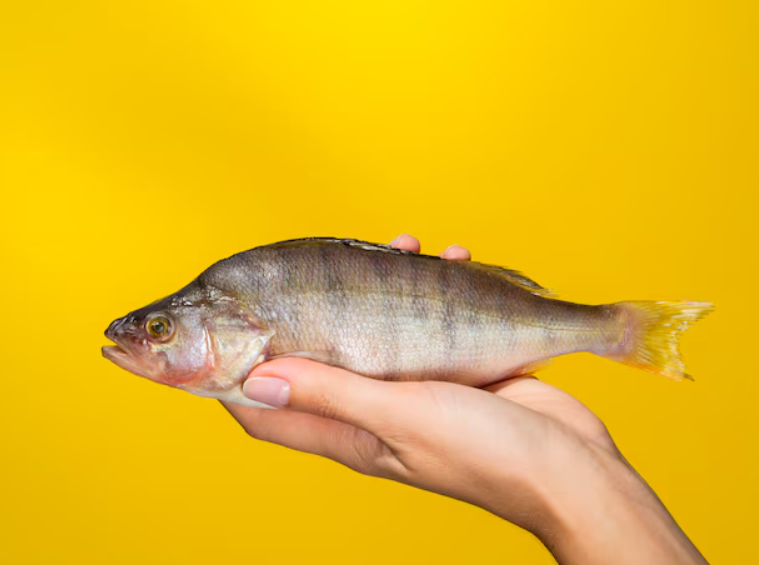
The Yellow Perch: Introduction to the Well-Known Freshwater Fish
A popular and highly valued freshwater fish, the yellow perch (Perca flavescens) is well-known for its eye-catching beauty, mouthwatering flavour, and extensive range. It is widespread across North America and other areas of the globe and belongs to the Percidae family. Because of their ease of catching, adaptability in the kitchen, and entertaining fighting style once captured, yellow perch are especially well-liked by fishermen. We will examine the Yellow Perch’s physical traits, habitat, nutrition, behaviour, conservation status, and cultural importance, offering a perceptive look at one of the most popular freshwater fish species in North America.
Physical Attributes of Yellow Perches
A medium-sized fish with a number of distinguishing characteristics, the yellow perch is simple to identify in the wild. Its identity is derived from these traits, which also help it survive in a variety of environments.
- Colouration: The Yellow Perch’s striking yellow or golden body with pronounced black vertical stripes along the flanks is its most distinctive feature. The fish’s stripes, which usually take the form of greenish or black bands, aid in its ability to blend in with the surrounding plants and other submerged objects. Different fish have different yellow colouring; some are more golden in colour, while others may be softer yellow.
- Size and Shape: Yellow perch adults usually reach a length of 6 to 10 inches, but under ideal circumstances, they may grow as much as 15 inches in certain places. Although they may grow bigger, especially in lakes and reservoirs with an abundance of food sources, they typically weigh between one and two pounds. With a somewhat deep and round belly, the body is long and slightly compressed laterally.
- Fins: The two dorsal fins of the yellow perch are soft on the second and spiky on the first. Their large, widely spaced pectoral fins help them balance and move about in the water. Additionally, they have pelvic fins close to the abdomen that aid with direction and stability. They can move quickly because of their forked tail fin, which helps them evade predators and catch food.
- Eyes: The yellow perch can detect food in low-light conditions due to its huge, conspicuous eyes and exceptional eyesight. Its entire colour scheme is complemented by the eyes, which are usually amber or golden.
Distribution and Habitat of the Yellow Perch
Native to North America, yellow perch may be found all throughout the United States and Canada. Lakes, rivers, ponds, and reservoirs are among the freshwater habitats where they are most often found. The species is found in a wide range of freshwater environments, including small, weedy ponds and big, deep lakes.
Habitat Preferences
- Yellow perch have a preference for temperate waters with moderate to high oxygen concentrations. Since they have enough feeding places and food supplies in cold, clear lakes or rivers with lush vegetation, they are usually found there.
- During the summer months, they prefer shallow, weedy environments where they may graze on aquatic insects and tiny fish.
Temperature Range
Although they can withstand temperatures ranging from 50°F to 75°F (10°C to 24°C), yellow perch prefer waters that are between 60°F and 70°F (15°C to 21°C). They can survive the winter months in a latent condition, albeit they may slow their pace in cooler water.
The yellow perch is mostly found in North America, although it may also be found in southern Canada and the northern United States, especially in the Ohio River, Mississippi River Basin, and Great Lakes systems. Other areas, including portions of Europe and New Zealand, have also adopted it for recreational fishing.
Diet and Behaviour of the Yellow Perch
As predatory fish, yellow perch mostly consume smaller aquatic creatures, including worms, insects, and other tiny fish. Their diet, however, might change based on the time of year and the food supply.
Feeding Habits
- Yellow perch are opportunistic feeders, which means they eat whatever prey is around. They often consume insects, crustaceans, zooplankton, and smaller fish, especially minnows and fish that are young of the year. In the wild, they will also eat aquatic worms, tiny crustaceans, and different kinds of fish larvae.
- Foraging: They usually feed in schools and are energetic feeders throughout the day. During the day, the smaller yellow perch will often graze in shallow, weedy regions, while the bigger fish will typically forage in deeper waters. They are less active and may eat less during the colder months, depending instead on their winter energy reserves.
Schooling
Being gregarious animals, yellow perch are often encountered in big schools, particularly as juveniles. They could establish smaller, less dense groups or grow more solitary as they become older. Because they may encircle prey and dine together, schooling helps fish avoid predators and improves hunting efficiency.
Lifecycle and Reproduction
In April and May, when the water temperature reaches between 50°F and 60°F (10°C and 15°C), yellow perch usually spawn. One of the most interesting parts of their life cycle is reproduction, which has a big impact on population dynamics.
Spawning Behaviour
- Male yellow perch fertilise their eggs externally, while females discharge a lot of eggs—typically tens of thousands at once. In shallow waters, the fertilised eggs are laid on brush piles, rocks, or submerged vegetation. In almost two weeks, the eggs hatch into larvae, which start eating minute creatures like little plankton.
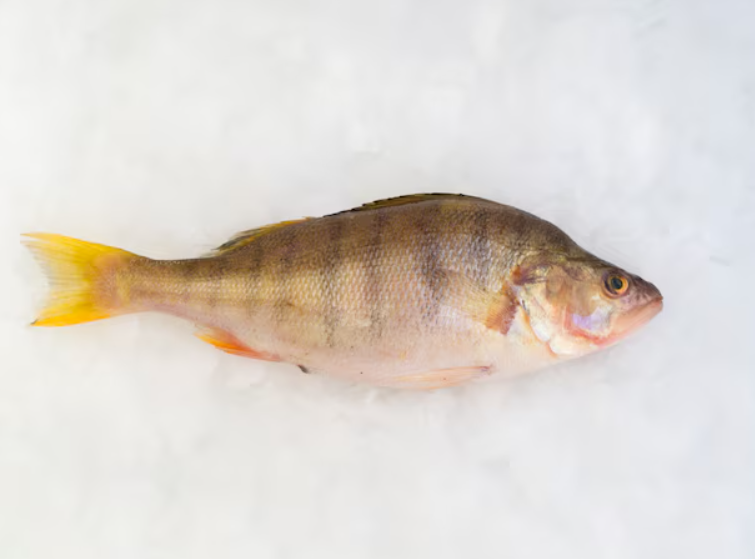
Growth and Maturation
Yellow perch develop rapidly, particularly in conditions that are high in nutrients. They may grow to a length of 4 to 6 inches during their first year, and by the time they are 3 or 4 years old, they are fully developed and ready to procreate. Although yellow perch usually live 6 to 10 years, under the right circumstances, they may sometimes live longer.
Predation on Yellow Perch
Other fish species, including largemouth bass, northern pike, and walleye, as well as birds and bigger aquatic predators, may prey on the eggs and young yellow perch. Nonetheless, they are somewhat shielded from predation pressures by their sheer numbers and educational habits.
Methods and Advice for Yellow Perch Fishing
Because of their quantity, flavour, and fighting ability, yellow perch are a popular target for both commercial and recreational fishing. During the summer months, fishermen often look for them in freshwater lakes, reservoirs, and rivers.
Fishing Equipment
- Light to medium-sized rods and reels, together with tiny hooks and live or synthetic baits like minnows, worms, or soft plastic lures, are often used by anglers. Many fishermen may depend on simple gear setups since yellow perch are not very hard to catch.
Fishing Locations
- Anglers often fish around shorelines, weed beds, and drop-offs close to deeper water since yellow perch favour weedy, shallow regions. Fishing in shallow areas close to submerged plants is very fruitful during the spawning season.
Fishing Methods
- During the winter, bottom fishing, casting, and ice fishing are popular methods for catching yellow perch. Because it imitates the movement of tiny creatures, the use of a small jig topped with bait is a popular and successful tactic.
Fishing Regulations
Because some areas may have size or seasonal restrictions to safeguard populations, it is crucial that fishermen abide by local fishing laws. Conservation initiatives make sure that yellow perch are sustainable for future generations, even though they are numerous in many areas.
Status and Management of Conservation
There are no significant risks to the overall conservation status of yellow perch populations, which are typically regarded as stable and numerous. However, overfishing, habitat degradation, and water pollution may pose problems for local populations.
Protection Efforts
Although habitat protection is essential for maintaining healthy populations, yellow perch are not classified as vulnerable or endangered. The long-term survival of the species depends on efforts to maintain pristine, densely vegetated water bodies. Yellow perch populations may potentially be in danger from the introduction of non-native species, particularly if those species compete for food or feed on perch eggs and juveniles.
Overfishing Risks
Although Yellow Perch are not usually in danger of being overfished, local populations may be impacted by excessive commercial fishing or unsustainable leisure activities, especially in smaller lakes or rivers. To stop depletion, it’s critical to enforce fishing laws and keep an eye on fish populations.
